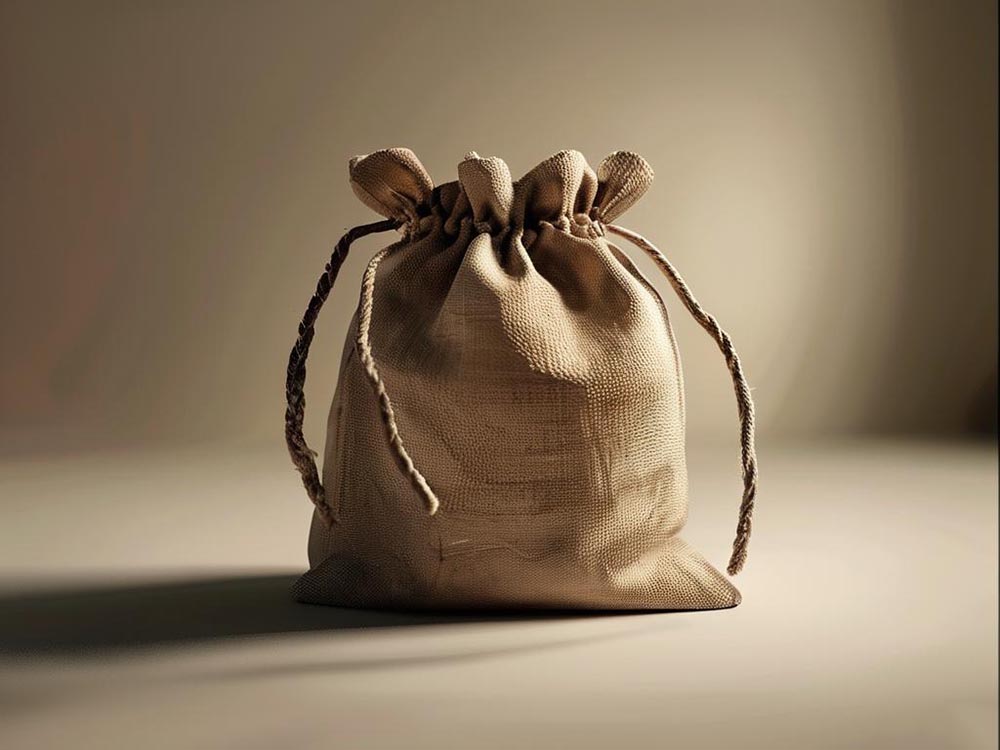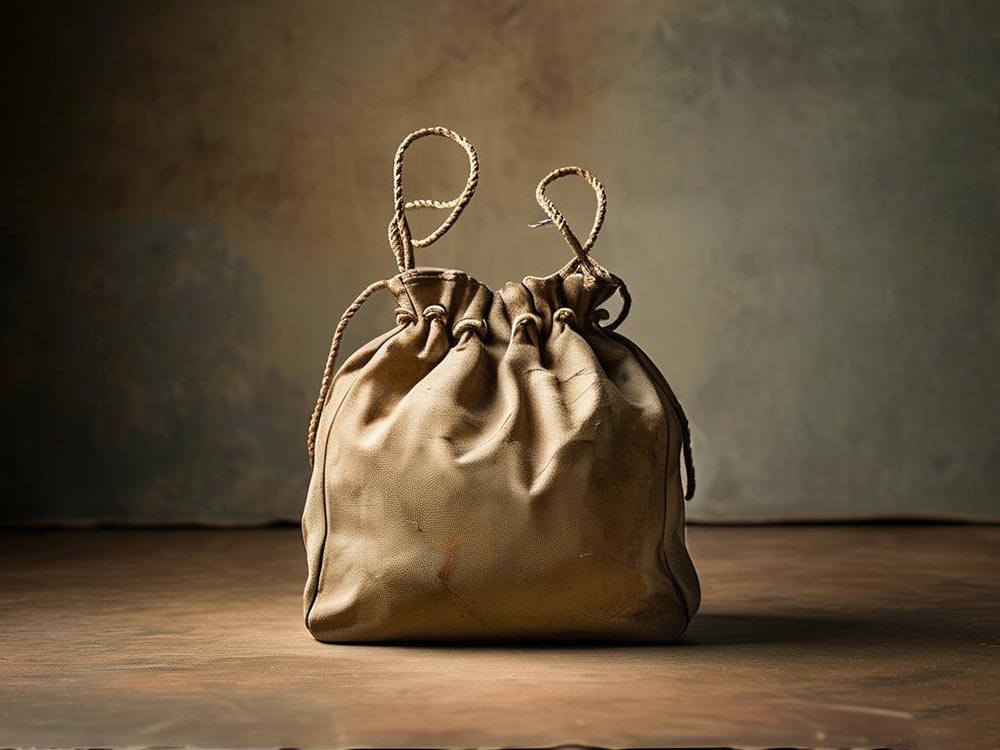Let Time Linger Naturally: The Aged Aesthetics and Life Philosophy of Wabi-Sabi Drawstring Bags
At the crossroads of Tokyo’s contemporary galleries in Omotesando and the century-old storefronts of Kyoto, a new language of objects is emerging. The Wabi-Sabi aesthetic drawstring bag is no longer merely a container for possessions—it has become a medium through which time is suspended. Deliberately preserved stitching wear, precisely calculated fading gradients, and the evolving tactile textures of cotton-linen blends all speak to a natural narrative increasingly rare in the industrial age. When Sen no Rikyū’s cracked tea bowls meet modern materials science, the traditional philosophy of “imperfection as perfection” finds a new vessel. This cross-temporal dialogue is neither a simple imitation of the past nor a compromise with mass production. Rather, it is a quiet revolution in craftsmanship—a quest to imbue everyday objects with the traces of life, reshaping how we value daily essentials.
What Is a Wabi-Sabi Aesthetic Drawstring Bag?
Unlike ordinary canvas totes, Wabi-Sabi-style drawstring bags are crafted with specialized techniques that give them the appearance of having been naturally aged over years of use:
- The fabric carries a subtle fade, as if gently kissed by sunlight.
- The stitching shows intentional yet non-compromising signs of wear.
- The overall color gradient is soft and harmonious, resembling an ink wash painting tinged by time.
The Evolution of Wabi-Sabi Aesthetics
1. The Beauty of Imperfection in a Millennium of Tea Ceremony
- A close look at the inspiration from Sen no Rikyū’s asymmetrical tea bowls.
- How contemporary design translates “imperfection” into commercial value.
2. From Philosophical Concept to Functional Object
- Comparative analysis:
- Traditional Wabi-Sabi artifacts: teaware, pottery, rock gardens.
- Modern Wabi-Sabi products: lighting, apparel, storage bags.
- Three reasons drawstring bags are ideal new carriers:
- Natural wear patterns emerge through daily use.
- The material’s adaptability over time.
- Universal appeal of minimalist Eastern design.
The Five Core Techniques Behind the Aged Effect
1. Color Sedimentation System
- Traditional method: Botanical dyes require three months of natural oxidation.
- Modern enhancement:
- Temperature-controlled fermentation chambers simulate five years of sunlight exposure (a slow-fading technique invisible to the eye).
- Case study: Developing the custom “Rain-Stained Blue” palette for a Kyoto teahouse.
2. Controlled Structural Wear
Precision wear mapping:
- Drawstring area > bag base > sides (based on ergonomic data).
- Unique “three-point reinforcement stitching” embeds extra threads at wear-prone edges.
3. Tactile Texture Programming
- Hardness progression curve:
- Initial: Cotton-linen blend has a crisp stiffness (hardness: 3.2 HB).
- After six months: Achieves optimal softness (hardness: 1.8 HB).
- Special treatment: Polished with rice bran to create a natural nap finish.
4. Scent Memory System
Optional embedded modules:
- Sandalwood powder coating.
- Roasted tea microcapsules.
- Unscented botanical antibacterial agents.
5. Sustainable Repair Design
Comes with a repair kit:
- Matching leftover fabric from the same batch.
- Refill pack of botanical dye.
- Custom tools for wear restoration.
How to Give a New Bag a Sense of Time?
We’ve developed three natural aging techniques:
- Natural Oxidation
Store cotton-linen fabric in a room with controlled temperature and humidity for 3–5 days to induce natural yellowing, creating unique color layering for each batch.
- Precision Wear Treatment
Use eco-friendly enzymes on stitching lines to simulate gentle fraying, mimicking prolonged use without compromising durability.
- Sunlight Fading Technology
Employ UV equipment to selectively fade fabric areas, creating a sun-drenched gradient effect more eco-friendly and long-lasting than dyeing.
Vintage-Inspired Yet Practical Design Enhancements
To ensure usability isn't sacrificed for aesthetics, three improvements were added:
- Transparent protective layer on high-friction areas like the drawstring opening.
- Memory crease design that molds to individual usage patterns over time.
- Plant-based dye reinforcement for enhanced wash resistance.
Sustainability at the Core
- Materials: Blend of recycled cotton and natural linen.
- Production: Wastewater is purified and reused.
- Packaging: Labels and handles made of recycled paper.
Designs Tailored for Different Lifestyles
- For Tea Ceremony Enthusiasts: Features tea-dyeing techniques that release a gentle tea aroma with use.
- For Bookstore & Cultural Retail: Bag coated with erasable layer for penciling in book lists.
- For Travel Keepsakes: Fabric interwoven with local plant fibers that develop unique textures over time.
Consumer Insights
1. User Profile Analysis
- Core demographic: Urban middle class aged 25–40.
- Top three buying motivations:
- Social currency: An accessory that reflects refined taste.
- Emotional remedy: A soothing item in a fast-paced lifestyle.
- Eco-statement: A visible sign of sustainable consumption.
2. Usage Scenarios
- Top 3 common use cases:
- As internal organizers in commuting bags (42%).
- For storing gym clothes (28%).
- For separating mother-and-baby essentials (18%).
- User-discovered new uses:
- Waterproof map holder during camping.
- Shock-absorbing sleeve for wine bottles.
Purchasing Guide
1. Four-Step Identification Method
- Look: Gradual tonal transitions > sharp boundaries of industrial prints.
- Feel: Subtle surface texture > completely smooth finish.
- Smell: Light botanical scent > synthetic chemical odor.
- Test: Check drawstring bounce with a 500ml water bottle inside.
2. Understanding Price Differences
Key pricing factors:
- Duration of fabric oxidation (each extra 24 hours increases cost by 15%).
- Number of hand-treated wear points.
- Level of eco-certification.
3. Recommended Brands
- Premium: Known for designer collaborations.
- Value-oriented: Focused on core functionality.
- Custom-tier: Supports personalized customization.
Care Tips
- Turn inside out when machine washing to protect fabric from metal abrasion.
- Air dry naturally and pat gently to maintain natural folds.
- Wipe with a dry cloth every six months to enrich the bag’s timeworn beauty.
Conclusion
The aging craftsmanship behind Wabi-Sabi drawstring bags is, at its core, a material experiment in visualizing the passage of time. From temperature-controlled oxidation to bio-enzyme processing, modern techniques don’t erase industrial precision—they reconstruct the logic of natural evolution through intricate processes. This success in simulating the patina of time stems from quantifying fabric aging patterns while responding to modern emotional needs for “tangible time.” In an age of instant gratification, people yearn to touch the texture of time through everyday objects. As sustainability merges with aging techniques and AR features extend product lifecycles, these drawstring bags—bearing the beauty of contradiction—are writing a new chapter in the philosophy of functional design.




 We like to do design according to all the customers' requirements, or offer them our new designs. With strong OEM/ODM capabilities, we can fill your sourcing demands.
We like to do design according to all the customers' requirements, or offer them our new designs. With strong OEM/ODM capabilities, we can fill your sourcing demands.